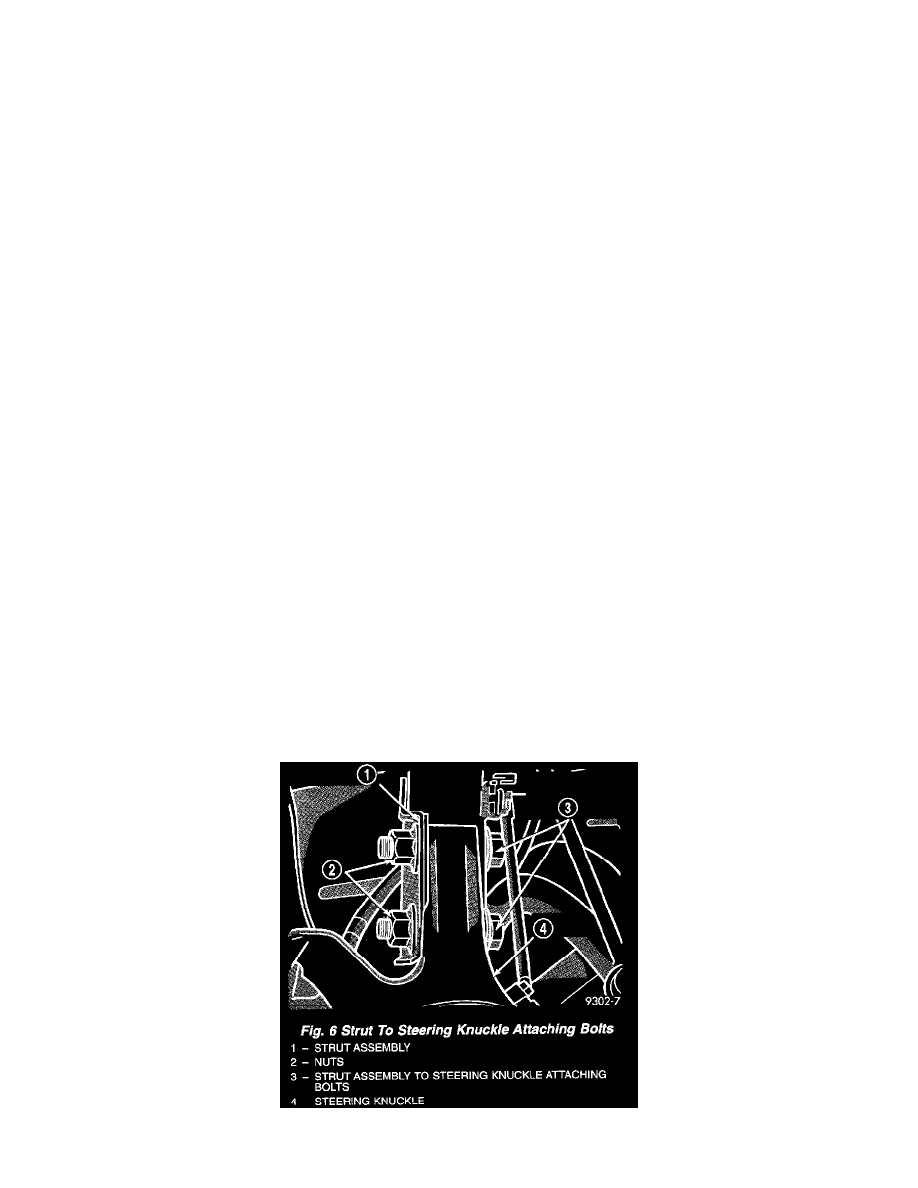Concorde V6-3.2L VIN J (2000)

Alignment: Service and Repair
Wheel Alignment
Wheel Alignment Setup
1. Position the vehicle on an alignment rack.
2. Perform a pre-wheel alignment inspection.
3. Install all required alignment equipment on the vehicle, per the alignment equipment manufacturer's instructions.
NOTE: Prior to reading the vehicle's alignment readouts, the front and rear of vehicle should be jounced. Induce jounce (rear first, then front) by
grasping the center of the bumper and jouncing each end of vehicle an equal number of times. The bumper should always be released when vehicle
is at the bottom of the jounce cycle.
4. Read the vehicle's current front and rear alignment settings. Compare the vehicle's current alignment settings to the vehicle specifications for
camber, caster and toe-in. See Alignment Specifications for the required specifications.
5. If the rear alignment is out of specification, adjust it first, before proceeding to the front. Rear camber and caster are not adjustable. If rear camber
is out of specification, check for damaged or bent rear suspension components.
Camber and Caster Adjustment
Front wheel Camber and Caster settings on this vehicle are determined at the time the vehicle is designed. This is done by determining the precise
mounting location of the vehicle's suspension components throughout the design and assembly processes of the vehicle. This is called a Net-Build
vehicle and results in no normal requirement for adjustment of the Camber and Caster after a vehicle is built, or when servicing the suspension
components. Thus, Camber and Caster are not normally considered an adjustable specification when performing an alignment on this vehicle. Though
Camber and Caster are not adjustable, they should be checked during the alignment procedure to ensure they meet the manufacturers specifications.
If camber and caster do not meet required specifications, the vehicles suspension components should be inspected for any signs of damage or bending.
This inspection must be done before performing the camber setting procedure.
If a vehicle has a drift or lead condition, and it is determined that the drift or lead is not caused by road conditions, the front camber can be adjusted
using the following camber adjustment procedure.
CAUTION: Do not attempt to adjust the vehicles Caster or Camber by heating, bending or by performing any other modification to the vehicle's
front suspension components.
FRONT CAMBER ADJUSTMENT PROCEDURE
There are camber adjustment bolts and nuts available to allow front suspension camber adjustment in the event the vehicle pulls even though the
camber is within specifications. This procedure involves replacing the original strut clevis to knuckle attachment bolts with special undersized bolts.
1. Raise the front of vehicle by the frame until the tires are not supporting the weight of the vehicle.
2. Remove the tire and wheel assembly from the location on the vehicle requiring camber adjustment.
CAUTION: When removing the strut to knuckle bolts from the strut clevis bracket, do not allow knuckle to pull away, putting a strain on the
brake flex hose. The bolts attaching the strut to the steering knuckle are serrated in the area where they go through the steering knuckle and strut.
When removing, do not turn the bolts in the steering knuckle. If bolts are turned in the steering knuckle, damage to the steering knuckle will result.
3. Remove the nuts from the bolts attaching the strut to the knuckle. Tap the bolts out of the knuckle.
